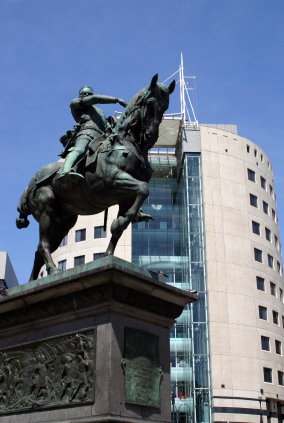 The city of Leeds has been an important economic and transportation centre since the 17th century. Over the years, Leeds has emerged as one of the most important urban centres in Yorkshire, and consequently, this has brought about demographic, industrial, and economic changes that have modified the face of the city. Continue reading for a detailed overview of the latest information concerning demographic, economic, and industrial trends in this West Yorkshire city.
The city of Leeds has been an important economic and transportation centre since the 17th century. Over the years, Leeds has emerged as one of the most important urban centres in Yorkshire, and consequently, this has brought about demographic, industrial, and economic changes that have modified the face of the city. Continue reading for a detailed overview of the latest information concerning demographic, economic, and industrial trends in this West Yorkshire city.
Leeds’ demographic background
As of 2012, the city of Leeds had a population of just over 800,000 people. This figure alone positions Leeds as one of the top five largest cities in the United Kingdom, but Leeds ranks even higher in terms of its population size once the Leeds-Bradford metropolitan area is included. The Leeds region, which includes Leeds, Bradford, and a number of surrounding towns, has a population of nearly 3 million. This means that the region is the fourth largest urban centre in the country. The population density figures for Leeds are also higher than those in other parts of Yorkshire, as the city has 10,500 people per square mile.
Demographic changes in Leeds have followed a pattern similar to that experienced by other former industrial English cities. At the turn of the 19th century, Leeds population was barely 94,000. As employment opportunities grew in the area, people became drawn to the city, and by 1831 the population had doubled to 183,000. For the following thirty years, the city saw annual population increases of up to 24 per cent. More people continued to arrive to the city, and the population reached a peak in 1971, when it was 739,000. However, over the following decade, the population shrank by nearly 6 per cent, mostly because of economic hardship and high unemployment levels. During the past ten years, the population of the city has started to increase again, although at a slower rate.
The number of people aged 20 to 29 is particularly large in Leeds (nearly 18 per cent against the national average of 13 per cent). The second largest age group is that belonging to people aged 30 to 44. The average age in the city is 37.6 years old.
According to the latest census data, approximately 88 per cent of the population in Leeds has been born in the United Kingdom. The census also shows that nearly half of the foreign-born population now living in the city arrived during the past ten years. The largest ethnic community is Leeds is the Pakistani, which makes up for 3 per cent of the city’s population, followed by the Indian community, which accounts for 2.1 per cent of all residents in Leeds.
Changes and trends in the Leeds economy
Leeds’ economy has traditionally been based around textile manufacturing and exports. This was the case even before the Industrial Revolution, as Leeds’ textile trade accounted for one sixth of the country’s total exports by 1770. The arrival of the railway boosted the local economy, as it linked the city with large ports, such as Manchester, Hull, and Liverpool.
The large-scale development of the economy in Leeds has also contributed to shifting the centres of economic power in the United Kingdom. Although the national economy still largely revolves around the capital, Leeds has become one of top banking and financial centres in the country. The total value of the economy is estimated at £15 billion.
The growth experienced by the local economy has resulted in higher demand for office, retail, and industrial space. As of 2013, nearly £4.5 billion have been invested in creating new commercial space, and it is expected that a further £5.9 billion will be completed in the medium term.
Key industry trends in Leeds
Banking, finance, and business services are the most important industries in Leeds. More than 30 international financial institutions are based in the city, including Zurich Financial Services, KPMG, and HSBC. The Bank of England has also opened an office in the city’s business district.
With more than 1,800 companies in the sector, manufacturing is Leeds’ second largest industry. The main sub-sectors are food and drink, engineering, chemicals, and medical equipment. Some important companies in these sectors include Mitsubishi, Siemens, Arla Foods, and Carlsberg.
During the early 2000s, Leeds was the third most popular retail centre in the country. This sector remains very important, as there are nearly 1,000 shops in the city and further development for the value of £600 billion is expected to be completed by 2016. The tourist industry has also recently expanded in Leeds, currently generating more than £1.4 billion a year.
The local government has designated several high priority industries that will help further the economic and social development of the city. These include creative and digital industries, health care, low carbon manufacturing, construction, social enterprises, and housing.

